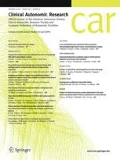Summary
Congenital insensitivity to pain with anhidrosis (CIPA) or hereditary sensory and autonomic neuropathy type IV (HSAN-IV) is an autosomal recessive disorder characterized by recurrent episodic fevers, anhidrosis (inability to sweat), absence of reaction to noxious (or painful) stimuli, self-mutilating behavior and mental retardation. The anomalous pain and temperature sensation and anhidrosis in CIPA are due to the absence of afferent neurons activated by tissue-damaging stimuli and a loss of innervation of eccrine sweat glands, respectively. Nerve growth factor (NGF) supports the survival of nociceptive sensory and autonomic sympathetic neurons as well as cholinergic neurons of the basal forebrain. The human TRKA (NTRK1) gene located on chromosome 1 (1q21–q22) encodes a receptor tyrosine kinase (RTK) which is autophosphorylated in response to NGF, thus, activating various pathways of intracellular signal transduction. We earlier identified the genetic basis of CIPA by detecting mutations in TRKA gene of patients. Defects in NGF signal transduction at its receptor lead to failure to survive as various NGF dependent neurons are not maintained, most probably due to apoptosis during development. TRKA mutations are distributed in an extracellular domain involved in NGF binding, as well as in the intracellular signal-transduction domain. Missense mutations with loss of function provide considerable insight into the structure-function relationship in the RTK family. In view of the fact that defects in TRKA cause CIPA, the molecular pathology of CIPA provides unique opportunities to explore critical roles of the NGF-TRKA receptor system. Thus, CIPA can serve as a useful model to determine mechanisms of development and maintenance of NGF-dependent neurons in autonomic, sensory and central nervous systems, as well as the physiology of these neurons in humans.
Similar content being viewed by others
Author information
Authors and Affiliations
Rights and permissions
About this article
Cite this article
Indo, Y. Genetics of congenital insensitivity to pain with anhidrosis (CIPA) or hereditary sensory and autonomic neuropathy type IV . Clin Auton Res 12 (Suppl 1), I20–I32 (2002). https://doi.org/10.1007/s102860200016
Issue Date:
DOI: https://doi.org/10.1007/s102860200016




